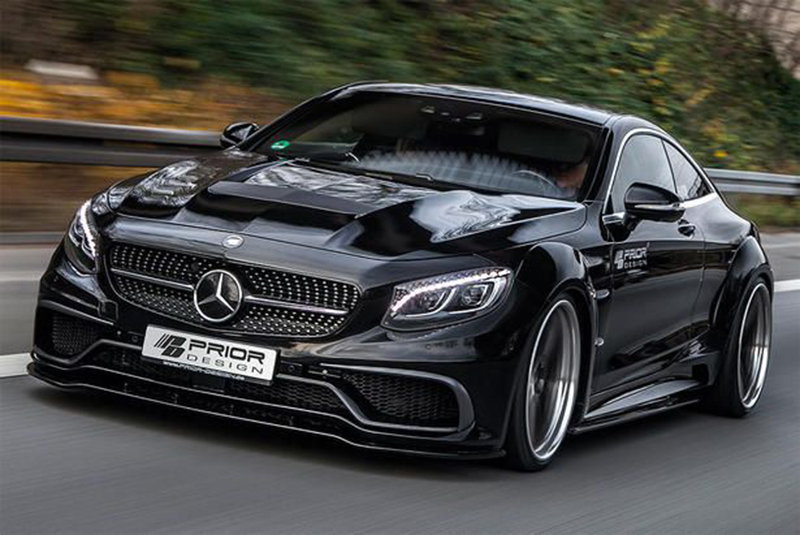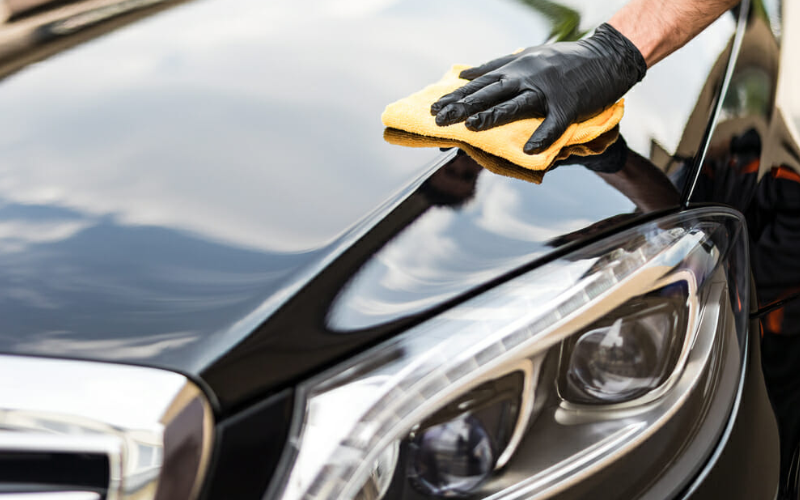If you’ve never been a fan of the “stock” vehicle, then it’s more than likely you have modified or are planning to modify your current car. The modding community would likely put your car into one of the three categories below:
- Tuner
- Ricer
- Sleeper
Of course, there are more categories to speak of, but these three do cover the majority of cars out there. In case you’re not fully in the know, here’s what those three terms mean:
A “Tuner” is a modified car done to an extremely high technical and aesthetic standard. The balance between the car’s natural looks and modified qualities is optimal, delivering looks and performance with near universal appeal.
A “Ricer” is essentially the opposite of a Tuner. It stands for “Race-Inspired Cosmetic Enhancements.” The Ricer is a car modified using cheap and often mismatched parts, creating a vehicle that lacks coherence and quality. Modders working on Ricers typically focus on noise and visual impact like wheel camber, rather than thinking about how mods work together to enhance the performance of a car.
A “Sleeper” is a car that looks very mundane and “stock” on the outside, but under the hood lies an impressive and technically masterful secret. These are the “silently” modified cars that don’t show off their glories outwardly, but are typically high-performance machines.
Car Body Kits
Our main topic today isn’t the differences between Tuners, Ricers and Sleepers, although that is an interesting topic. Today our focus is on car body kits: what they are, who they’re good for and what to think about before purchasing one. Among our three broad modified car types mentioned above, body kits can serve all of them well.
Tuners have usually already made great use of body kits and other parts to achieve a pleasing level of aesthetics to pair with their performance upgrades. Ricers are in need of good matching body kits that fit the car well and form a coherent and pleasing look. Sleepers, too, can benefit from body kits, adding a fantastic boost to their already excellently tuned engines, exhausts and other hardware.
What is a Car Body Kit?
Put simply, an automotive body kit is a set of modified parts designed to replace or augment the OEM features (stock features) of a car. Common components within a car kit include (but are not limited to):
- Front bumpers
- Rear bumpers
- Side skirts
- Spoilers
- Hoods
- Fenders
- Scoops
These parts are usually made from materials such as fiberglass, polyurethane (PU) and/or carbon fiber, with fiberglass being the cheapest option and carbon fiber the most expensive. In the middle sits PU, which is affordable and durable, making it arguably the most common material used by modders, depending on their individual budgets, of course.
The overall effect of a body kit depends on numerous factors. Firstly, the quality of the fitting work is a crucial factor. More experienced and skilled modders are more likely to do a better, cleaner job of putting it all together. Another factor is materials, as we described above. Fiberglass additions are far more budget-friendly, but will have a cheaper look as well. Carbon fiber is an expensive option, but has other benefits for the racetrack such as extraordinary strength and durability against intense forces put upon it when travelling at speed for protracted periods of time. Finally, how well-informed and thought-out the purchase of the body kit was is also a crucial factor, which we will explore in more detail below.
How to Choose the Right Body Kit
Any modder with know-how will tell you that to walk blindly into a body kit purchase is a foolish endeavor. Always furnish yourself with good information to make the right choice. Here are some helpful tips for choosing a body kit well.
1. Budget Carefully
Car modification projects can easily get out of hand if you don’t plan ahead and decide on a clear budget. Think about what you can really afford, and remember that certain modifications can affect insurance and other costs. Even aesthetic changes to your car could increase your insurance premiums by 10-15 percent if you are carrying a standard insurance policy. If your insurance was taken out for the stock vehicle, then you’ll have to factor in these changes on top of the costs to purchase the body kit.
If your insurance is set up for a modified car, then you likely won’t face premium increases. There is an exception to this, which is that when those changes to the car’s bodywork result in your car becoming significantly more valuable, then insurance may still be affected.
Remember that a body kit project can easily reach into the thousands of dollars, even going north of $15,000 depending on kit size, materials and quality. Top-end kits can even skyrocket to $50,000. Set your sights on a realistic balanced budget that will give you the results you want without breaking the bank. A car is still, in the end and for the most part, a depreciating asset – use your money wisely.
2. Read the Reviews
You’ll have a huge choice of suppliers of body kits, and equal to the variety in manufacturers is the variety in quality, ranging from terrible to superb. Buyer reviews, therefore, play a major role in determining which are the reputable buyers and which are not. Check to see if the suppliers have Google reviews, and if not then you can take to the active car modification forums to get information. What you’re looking for, ideally, are users who have had the same kit you are interested in for some time. Finding out the story of the body kit from purchase several months ago to today will give you key insight into how that kit will perform for you.
3. Think About the Downside
Besides affecting your insurance costs, the type of body kit you choose can bring other disadvantages with it. For example, a body kit that dramatically changes the look of the vehicle may well affect its resale value in the future. The bigger the change you make, the more “niche” your car becomes. Stock vehicles may seem boring in your eyes, but they are made to have near universal appeal, which is why they sell countless millions of units year on year. Every modification you make brings the car closer to your own vision, but also a step further away from what is generally thought of as appealing.
One way to prepare for this eventuality is to make sure that you keep safe all the original OEM parts that you replace or augment with a body kit. This means you can restore the car to its original status before you sell. You might even get a better deal because the OEM parts will likely be in fantastic condition, not having been used. You can then sell the kit parts to recoup more of your initial budget.
Two more downsides to body kits are the impacts on your car’s safety and warranty. In terms of safety, the materials of the body kit you purchased may be weaker or less durable than the OEM parts they are replacing. They are often third-party aftermarket products that don’t follow the same production standard as your car manufacturer, especially at the high-budget end. Finally, such modifications may void the manufacturer’s warranty on your car, thus making you liable for repairs that would otherwise have been covered. While the threat of voiding a warranty is sometimes overstated, it is still unwise to purchase any body kit without first checking to see if it would impact the policy.
4. Body Kit Style is Important
This point is especially for those planning to modify their street car. Your car can be a big part of how others perceive you. The more extreme the body kit modifications you make, the greater risk you run of putting across the wrong impression, especially in a professional situation. Let’s say you have a job in sales or customer relations where you frequently meet with customers in public. Someone pulling up in a gleaming silver Audi A4 is projecting serious professionalism. Someone pulling up in a hatchback with a giant spoiler, jagged bumpers and devilish alloy wheels looks less so. It’s just the way the world seems to work. Think about that before you make the modification using a body kit.
Best Body Kits Available
The size of the aftermarket parts industry is enormous nowadays, estimated at $378.4 billion in 2019 in a report published on Grand View Research. Body kits are a significant part of that, as is shown in the sheer variety of manufacturers and consumer choice that now exist within the marketplace. Where before 2000, body kits were often seen as a niche, even fringe market for oddballs, they are now incredibly popular and in-demand. So big is this demand that some manufacturers are now offering factory-fitted kits, and big auto giants are designing their own kits to compete with existing market players.
Below are three of the most popular brands that you may encounter when searching out your own body kits.
VeilSide Body Kits (Japan)
This Japanese manufacturer started in components for suspension and engine tuning, but has since expanded into aesthetic parts like body kits. As you’d expect, they market their products to big Japanese brands — Toyota, Nissan, Mazda, Honda, Subaru, Mitsubishi in particular. One standard kit for a Mazda RX-7, for instance (one of their most popular models for modifying) comes to a total of 359,000 Yen, which is equivalent to roughly $3,398, which includes a front bumper spoiler, side skirt, rear under spoiler and two rear wings. Alternatively, a higher-end RX-7 kit can cost $17,000 but does include extra gear.
Through its fairly long history, VeilSide has become known for its innovation and design prowess. Unfortunately, that hasn’t translated well to their own website, which is still somewhat lacking in accessibility and clarity. You can always purchase their great kits from bigger platforms like bodykits.com, however.
Liberty Walk (Japan)
Based in Nagoya, Japan, Liberty Walk has quickly become a fan favorite since their establishment in 2009. Unlike their fellow Japanese brand, VeilSide, Liberty Walk caters to a more eclectic range, including Japanese, German (Audi, BMW, Mercedes-Benz), Italian (Maserati, Lamborghini), British (McLaren, Mini) and American brands (Chrysler, Dodge). Like VeilSide, however, they do also cater to a huge range of budgets, from a few thousand dollars for a Chrysler 300 body kit up to $30,000 or more for a Lamborghini kit.
Their style is characterized as somewhat “aggressive” in looks, which stems from the similarly flamboyant and over-the-top styles of modified cars in Japan during the 1980s and 1990s. It was known back then as “Bosozoku,” and it is an important foundation of the philosophy of Liberty Walk’s body kit design philosophy.
Mansory, Novitec Group, and Hamann Motorsport (Germany)
These three companies are certainly well known in the world of body kits, but not for quite the same reason as their Japanese counterparts mentioned above. These companies actually work together with car brands to create individualized, modified versions of various luxury and high-end cars to create unique body kits that help these cars to stand out. Mansory, for instance, offer everything from Aston Martin to Zapico. Others, like Novitec specialize in Italian marques.
These companies cater to the non-DIY sector of the car modding enthusiast community. When you want a customized model that stands out, and will certainly exemplify or surpass “Tuner” standards, then these are the companies to which you can turn.
Car Body Kits – Making Smart Choices
Overall, we hope you can appreciate the amount of thought and planning that is needed before purchasing a body kit. It’s about smart and informed choices to ensure that you don’t exceed your budget, or purchase unsuitable kits that don’t align with your goals and lifestyle.
Don’t forget also that the real cost of a body kit goes beyond the price to purchase the components. There’s also the possible impact on insurance and warranty, as well as the man hours and third-party labor costs involved with installation or maintenance. Remember to apply all of these things to your budget.
In the end, most car body kits find their chief value in the aesthetic. A minority of high-level kits, like those carbon fiber kits, do significantly boost strength and performance on the track. Don’t expect miracles to happen just because you switch your OEM bodywork for something customized. After all, the body kit doesn’t directly impact the hardware that you have under the hood.



